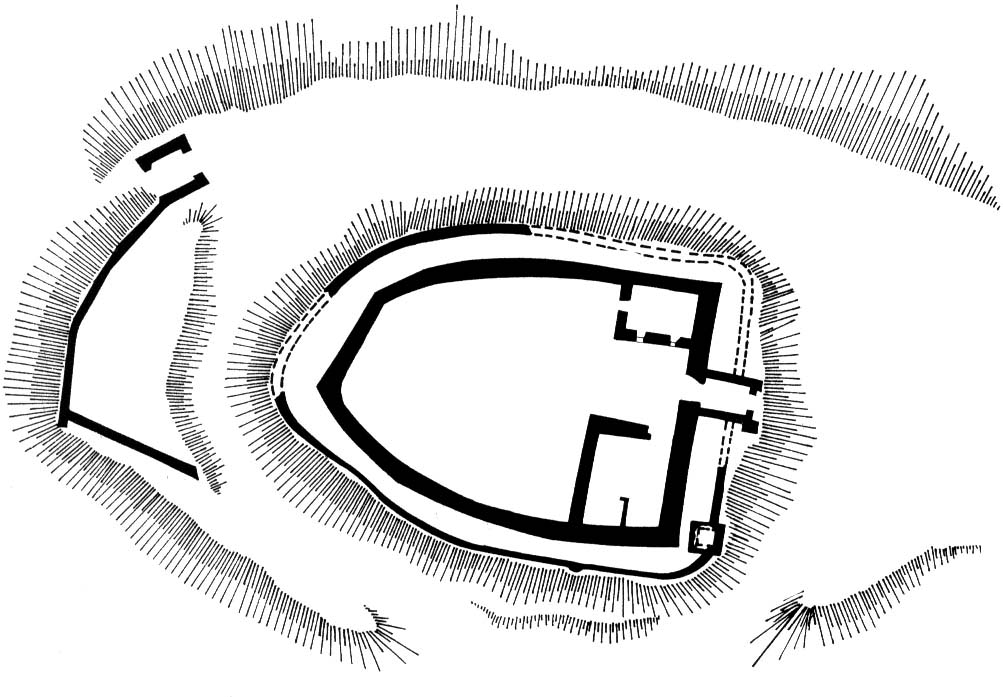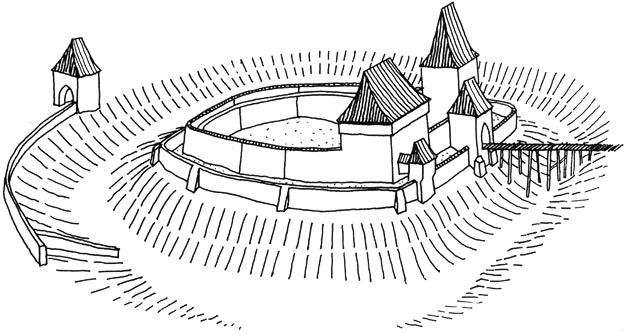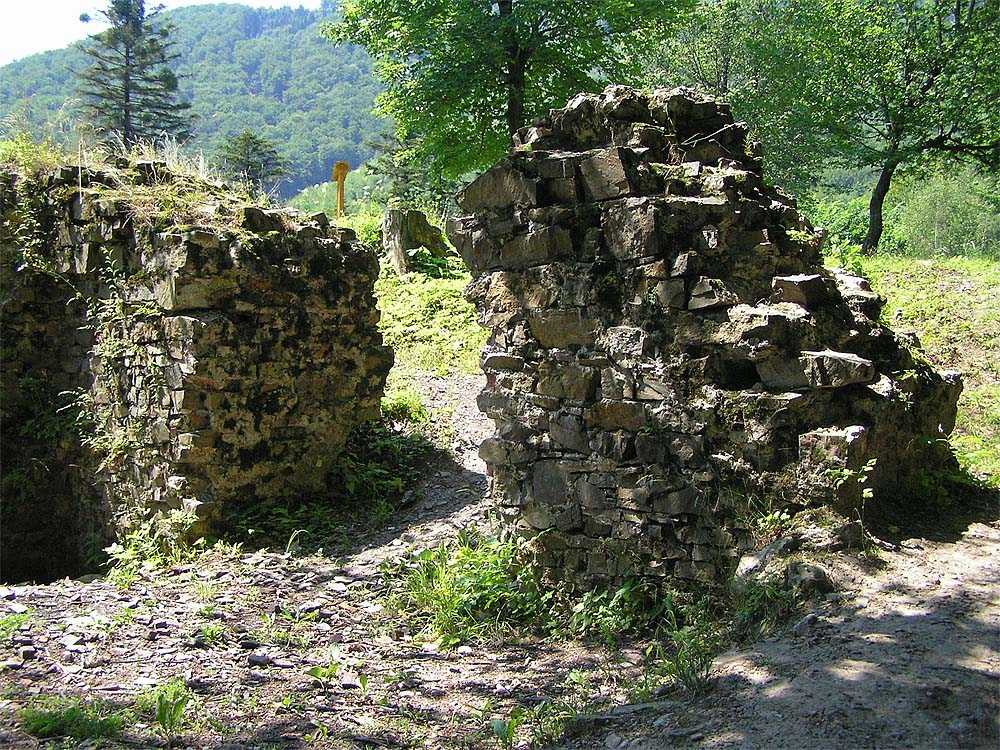History
The Wołek castle was built in the 14th century by prince Jan I Oświęcimski as a border watchtower controlling the route through the Żywiec Basin to Hungary. It was besieged and destroyed several times. In 1452, prince Jan IV of Oświęcim invaded and plundered Lesser Poland. In retaliation, the Polish king Kazimierz Jagiellończyk sent troops that forced the prince of Oświęcim to flee. He sheltered on Wołek, from where he supported the bandits robbering Lesser Poland. In 1454 the army of Kazimierz Jagiellończyk was unsuccessfully besieged the castle, and not much later Jan IV surrendered to the king, selling him the Duchy of Oświęcim along with the castle. The last mention of the castle refer the year 1477, when it was demolished or seriously damaged by Polish troops in relation with the attempts of the count of Orava and Liptov, Piotr Komorowski and his brother Mikołaj to pass to the side of the Kingdom of Hungary.
Architecture
The castle was erected from the local stone with minimal use of bricks. The main element was a perimeter wall with a thickness of up to 2,5 meters, surrounding the courtyard on the ellipse plan. On the outside of the wall was a moat with a depth of about 3,5-7 meters. Inside to the wall adjoined: a tower on a rectangular plan and a building with dimensions of 9,2 x1,6 meters. Between them was a gate to which a drawbridge ran, supported on a bricked outpost. Below the moat was the second line of fortifications. It was made of a 1 meter thick wall. In south-east part of the tower has survived fragments of the tower. An earth ramparts with an additional gate tower, through which the access road led, was built in front of the moat. A third perimeter wall adhered to it.
Current state
Castle Wołek has not survived to modern times. Only small fragments of the foundations of the defensive walls and traces of the moat remain.
bibliography:
Leksykon zamków w Polsce, red. L.Kajzer, Warszawa 2003.



